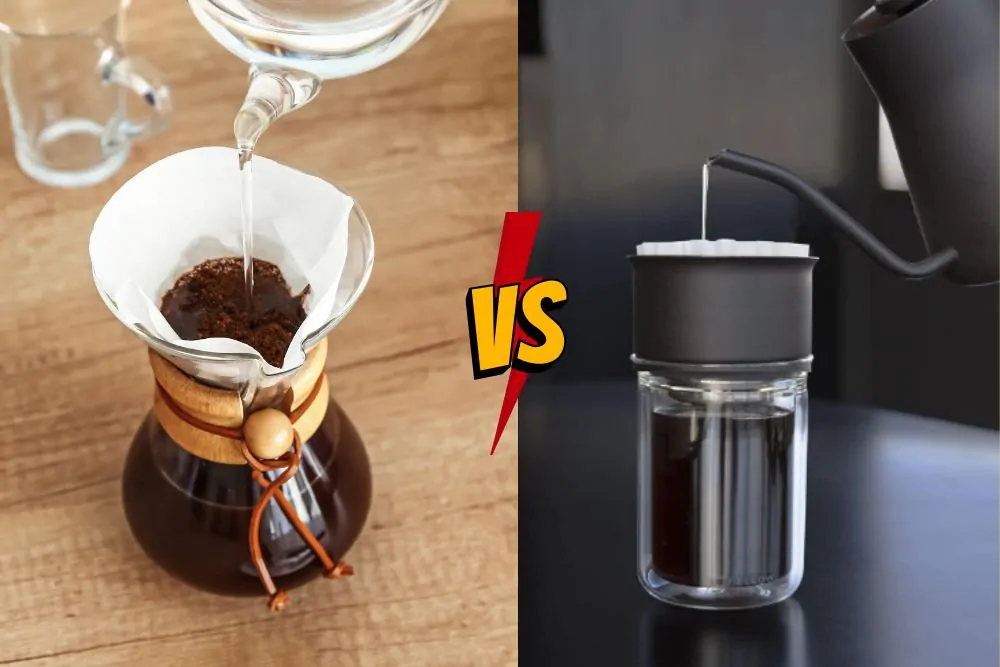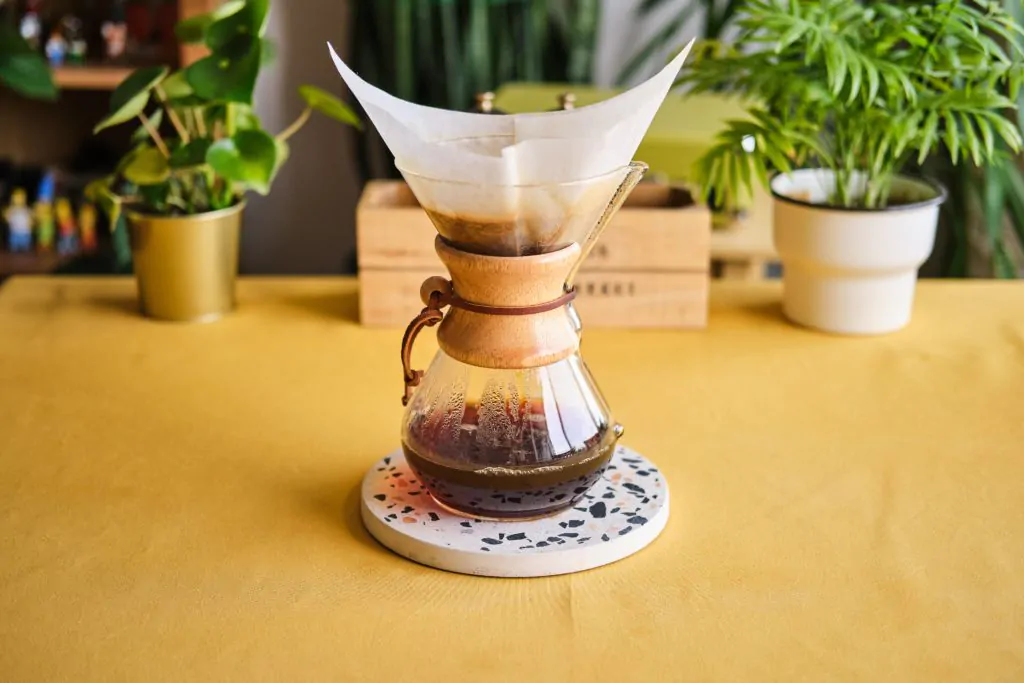Choosing between the Chemex vs Stagg pour overs is basically a choice between luxury and utility. So which do you choose?

The pour-over brewing method has been all the rage for now, and I have most definitely joined the movement. I started with the V60, then the Kalita Wave, and then eventually splurged on a Chemex. And I must say, the Chemex has me hooked.
I love the ritual of making coffee in this beautiful coffee maker and the sparkly and subtle-tasting brews it provides. However, a few acquaintances of mine have been raving about the Stag pour-over lately, so I decided to loan one and give it a try. Here’s my two cents’ worth on the Chemex vs. Stagg debate.
A Short Overview Of The Chemex Vs Stagg
Since its invention in 1941, the Chemex has been a much-loved coffee maker amongst coffee enthusiasts who enjoy a wonderfully clear cup of coffee. The clear brew you get from the Chemex is due to the coffee maker’s proprietary bonded filters. Since the filters are thicker than normal filters, they remove most of the coffee oils and sediment.
Apart from the delicious coffee the Chemex provides, this coffee maker also boasts a beautiful yet functional design consisting of an hourglass-shaped carafe and a wooden collar around the neck for easy handling.
The Stagg is a flatbottom pour over that’s manufactured by the company Fellow, which is well known for its popular Stagg Kettle. This pour over couldn’t look more different from the Chemex.
With its vacuum-insulated body that’s constructed from stainless steel, the Stagg looks more like a thermos mug than a pour over. As opposed to other pour overs, the Stagg has a steep interior slope, which means that as the water travels through the dripper, it comes into contact with the coffee grounds for a longer time.
What Do The Chemex And Stagg Have In Common?

Both the Chemex and Stagg are pour overs that come with their custom filters. While the filters of the Chemex are thicker, the filters of the Stagg are designed to fit into the steep slope of the pour-over dripper. Like the Chemex, the Stagg’s carafe, which you buy separately, is made from borosilicate glass.
You might also be interested in our Moka Pot vs. Pour Over guide.
Comparison Between The Chemex And Stagg
|
Chemex |
Stagg |
|
The Chemex is made from borosilicate glass. |
The Stagg dripper is constructed from sturdy stainless steel. |
|
The Chemex consists of one unit: an hourglass carafe with a wooden handle. |
The Stagg dripper comes with a ratio aid and a funnel. You can invest in a separate double-walled carafe that is a perfect fit for the dripper, or you can use your own vessel. |
|
With the Chemex, you want to go with a medium-coarse grind. |
A medium grind works best with the Stagg. |
|
Brewing coffee with Chemex requires a bit of technique and effort. |
It is quick and easy to brew pour-over coffee with the Stagg. |
|
With the Chemex, you need to slowly pour the water over the coffee grind. |
With the Stag, you can use the simplified fill-up method, which means you fill the dripper with water in one go. |
|
Although the borosilicate glass of the Chemex is thermal resistant, it cannot regulate heat like the Stagg dripper does. |
Because of the insulating material of the dripper, you’ll have less heat loss and a more consistent brew temperature.
|
|
Brewing coffee with the Chemex takes about 3.5 to 4.5 minutes. |
It takes about 2 minutes to brew coffee with the Stagg. |
What’s Better About The Chemex?

Brewing a cup of coffee using Chemex is a bit of a ritual — and one that I like. Granted, I don’t opt for making coffee in my Chemex when I’m pressed for time. However, on a slow night at home or when you have guests over, taking out your Chemex and brewing a full-flavored yet wonderfully clear coffee brew is a treat.
Also, the stylish good looks of Chemex can’t be ignored. Especially if you invest in a handblown coffee maker, the Chemex is both a coffee maker and a piece of art!
What’s Better About The Stagg?
The Stag produces a decent and perhaps a more full-bodied and intense, pour-over brew without much fuss. Worry less about weighing your coffee beans or about the coffee-to-water ratio.
The Stagg comes with a ratio aid that guides you concerning how much coffee to use, and as soon as the tasting glass — which is an optional extra you can invest in — is filled with brew, you can stop adding water and enjoy a good cup of coffee. Also, the Stagg’s durability and compact size make it the perfect travel companion.
Who Should Go For A Chemex?
The Chemex is well-suited for coffee aficionados who like to get involved with all aspects of the brewing process. If you like measuring your coffee grounds, folding filters correctly, and perfecting your pouring technique, you’ll enjoy the Chemex. Also, if you have a big family or like to entertain, Chemex can provide you with large batches of coffee.
Who Should Go For A Stagg?
The Stagg pour-over is perfect for those who want to enjoy a deliciously clear cup of coffee without having to go through too much trouble. Also, if you like camping or don’t like to travel sans your coffee maker, the Stagg is an excellent choice.
Chemex Comparisons
Chemex Ottomatic Vs Ratio Eight

